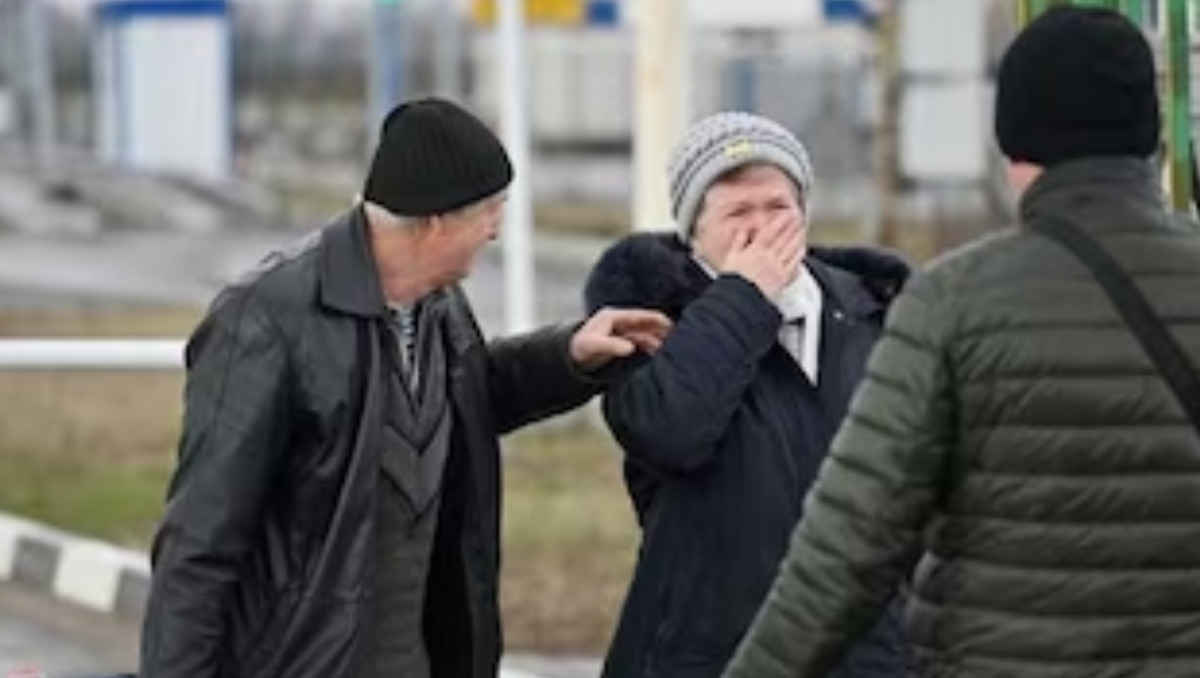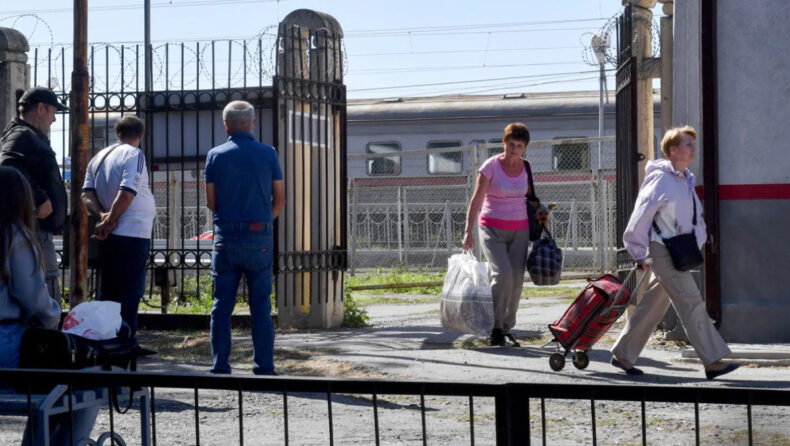In a move that has raised eyebrows internationally, Russia has been working to facilitate smoother border crossings between its territory and the occupied regions of Ukraine. Since the Kremlin annexed four Ukrainian territories last year, Moscow has been encouraging residents to take up Russian citizenship, leading to a more porous border and improved crossing procedures.
Table of Contents
A More Comfortable Journey Across Border
Residents in occupied regions, like Tatiana, have witnessed significant changes in border crossings. Previously, they had to navigate a complex process involving checks by Moscow-sponsored separatists and Russian customs officers, resulting in long traffic queues. However, the annexation of these territories has led to a simplified process.

Now, Tatiana simply arrives at the edge of the war-battered Donetsk region, presents her Russian passport, and crosses the border with a casual “thank you.” She describes this change as “more comfortable” because, as she puts it, “we’ve become Russians.”
Fast Integration Despite International Disapproval
These smoother border crossings serve as one of the most visible indications of Russia’s rapid efforts to absorb the occupied territories, even as the international community, including some of Russia’s own allies, refuses to recognize Moscow’s authority in these regions.
The Kremlin has taken further steps to integrate these territories, including hosting local government elections last weekend, where the pro-Kremlin party United Russia claimed victory in all regions. Moreover, Prime Minister Mikhail Mishustin revealed that nearly two million Russian passports have been issued to Ukrainians in these occupied areas.
Despite these administrative changes, Russia’s military still does not have full control over the annexed regions. Ukrainian forces have been gaining ground, particularly in the southern Zaporizhzhia region and Donetsk in the east.
Life on the Frontline
While the smoother border crossings are a welcome change for residents like Tatiana, life in frontline Ukrainian towns remains perilous. Cross-border drone attacks and shelling have become routine occurrences. Russian authorities are attempting to contain the fighting on their side of the border, but the conflict’s impacts are felt far and wide.
Travelling further from the frontlines, signs of ongoing conflict are visible. Russian military vehicles adorned with large Z and V tactical symbols are seen on the road between Taganrog and the Avilo-Uspenka crossing point. Overhead, Russian attack helicopters patrol the skies.
For residents of occupied cities like Donetsk, Lugansk, and Mariupol, life has been shaped by the conflict. Thousands still undertake the journey to Russia by bus or car, seeking refuge and stability.
Challenges Remain for Some
While the process of entering Russia has become more straightforward for civilians, challenges persist for specific groups. Lorry drivers, for example, are subjected to meticulous checks by Russian customs officers, and the rules for crossing differ significantly for vehicles and goods.

Additionally, some, like a mother and her son mentioned in the report, face difficulties at the border, with accusations of desertion and aiding deserters. These experiences highlight the complex and evolving nature of border crossings in this contested region.
Hope Amidst Uncertainty
As Russia seeks to erase the border with occupied Ukraine, many, like retired postal worker Natalia, wait for the one daily train connection from Russia back to the occupied Donetsk region. Despite the challenges and uncertainties, there is still hope among those affected by the conflict.
“We’re not quite in Russia yet, but we’re going to hope,” Natalia said. Her sentiment reflects the resilience and determination of those living in the shadow of geopolitical tensions and territorial disputes.
As Russia continues its efforts to integrate the occupied territories, the international community watches closely, and the fate of these regions remains uncertain.
Read More: Putin and Kim Jong Un’s Weapons Summit Diplomacy













